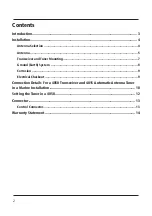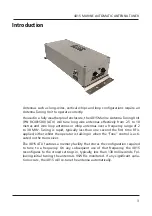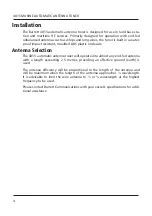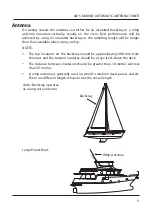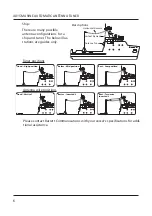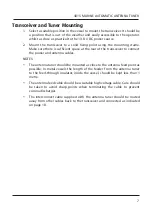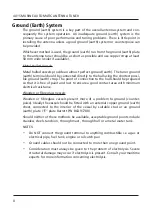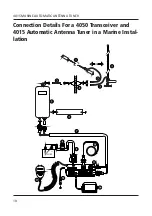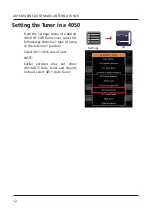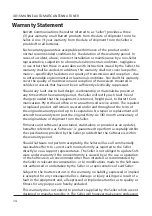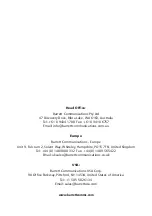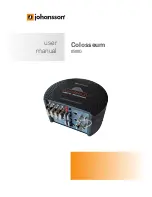
9
4015 MARINE AUTOMATIC ANTENNA TUNER
Corrosion
All connections in marine situations are subject to corrosion and oxidation. To
minimise this all joints should be cleaned and have silicon grease applied before
assembly. Under severe conditions joints should be protected with self vulcanis-
ing rubber tape.
Electrical Checkout
1.
After mechanical installation is complete, select the highest frequency to
be used on the transceiver. A directional watt-meter may be inserted in the
coaxial transmission line between the transceiver and the tuner, if desired,
although the internal tuner of the 4050 transceiver is accurate.
2. The tune mode on the transceiver is then activated. Upon application of
RF
energy, the tuner should start to tune, indicated by the ‘clattering’ of the
tuner relays. After a few seconds the relay noise will cease. The transceiver
should indicate “Tune OK” and the watt-meter reflected power should indi
-
cate a low value consistent with a VSWR of better than 2:1.
3.
Select the lowest desired frequency on the transceiver and repeat the above
procedure.
The result should be the same, except that the tune cycle may take longer. If the
above procedure does not give the results as indicated, check that the antenna
length and connections are correct and re-check all ground (earth) connections.
NOTE:
• When received, the Barrett 4015 automatic antenna tuner memory system
will usually not have any pre-stored tuning information appropriate to
your installation. To allow the 4015 to ‘learn’ its tuning information simply
proceed from one channel to the next allowing the normal tune cycle to
take place. Each successful tune is ‘memorised’ so that when that channel
is re-selected, the tuner will almost instantaneously retune to that fre-
quency.


